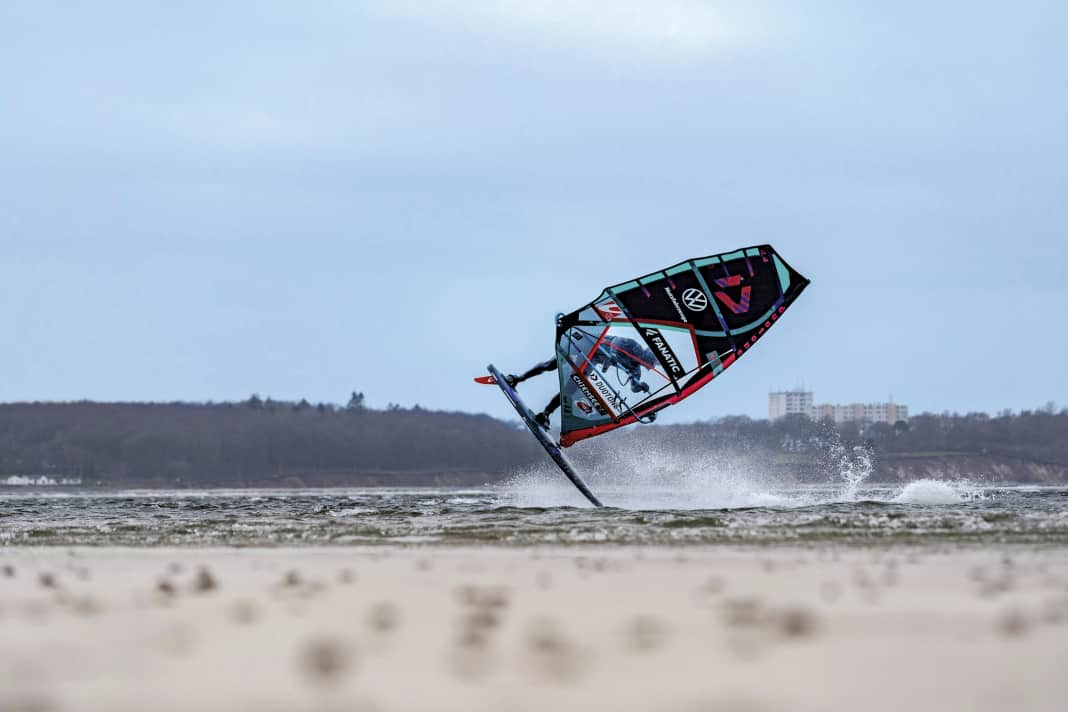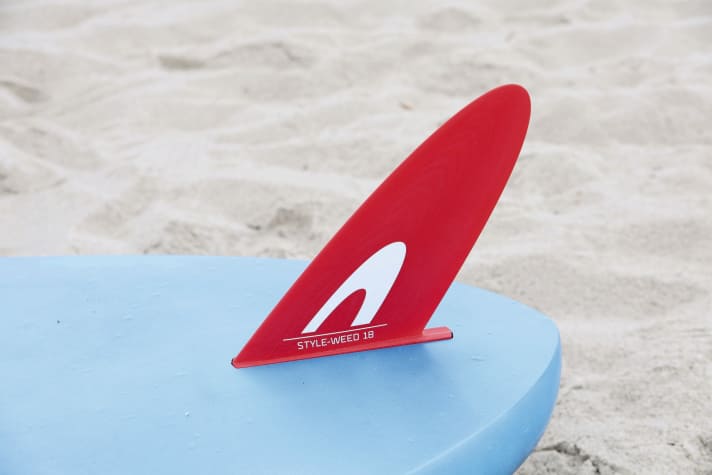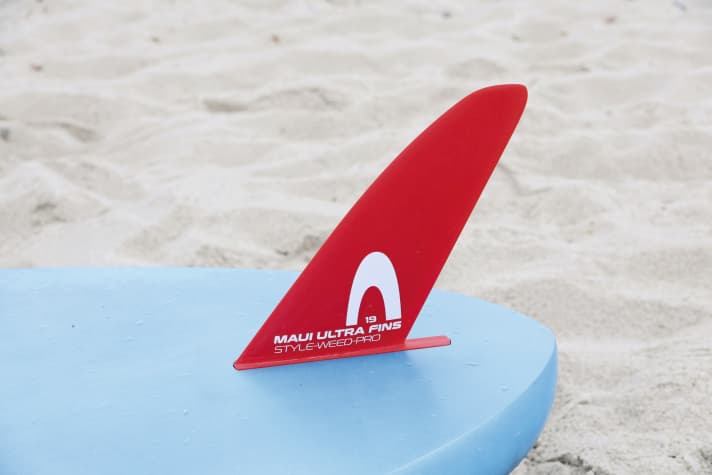



As freestyle boards are ridden with comparatively short fins and more over the windward edge anyway, the loss of performance when switching to a weed fin in terms of top speed, levelling and planing is less than when freeriding, for example. Rather, the focus here is on the fact that the boards slide less easily due to the flatter angle of inclination of the weed fins. The selection of models is manageable, two variants of Maui Ultra Fins were available for testing.
Germany's top freestyler Niclas Nebelung, who is involved in fin development at Maui Ultra Fins, explains: "Due to the larger surface area that weed fins naturally have, you have to make the weed fins a little smaller, because otherwise sliding is too limited. Many production boards are equipped with a 20 mm production fin, so an 18 mm weed fin is a good alternative. The Pro version is thinner and faster - but you should be a little more careful in shallow water, because the thin fin blade is also less robust in the event of stone contact."
Maui Ultra Fins Style Weed

The Weed model is slightly offset forwards on the base and has a flatter angle than its sister model, the Style Weed Pro. The fin also has more surface area and a slightly thicker profile, especially in the tip area. This manifests itself on the water in that this model takes pressure a little earlier and can also withstand more lateral pressure on the cross. This makes the Style Weed pleasantly easy to ride, even if you are travelling with large freestyle sails or are not using perfect technique to load the tail sensitively. In sliding moves, the fin with a flatter angle of inclination naturally offers more grip, so sliding through double moves is slightly limited compared to standard fins. Therefore, when choosing this model, you should orientate yourself towards the lower end of the size recommendation.
- Available sizes: 15/16/18/20/22 cm
- Box systems: Deep Tuttle/Power/Slot/US
- Material: G10
- Price: 99-119 Euro
Maui Ultra Fins Style Weed Pro

The Pro version of the freestyle fin is also slightly offset forwards at the base. In direct comparison to the Style Weed, however, the profile is significantly slimmer, the angle of inclination somewhat steeper and the surface area in the tip visibly reduced. Pure planing is comparably good, but on the cross you need a little more sensitivity to avoid spin-outs, especially when you are powered up and travelling with large sails. The slimmer profile is slightly faster and therefore offers more potential for high power moves - but only if you can pull tight in smooth water in a controlled manner. You can slide the fin with noticeably less pressure, which supports double moves. However, due to the steeper angle of inclination, the fin does not graze seaweed quite as efficiently and sometimes only with a delay.
- Available sizes: 16/17/18/19/20 cm
- Box systems: Deep Tuttle/Power/Slot/US
- Material: G10
- Price: 109 Euro
